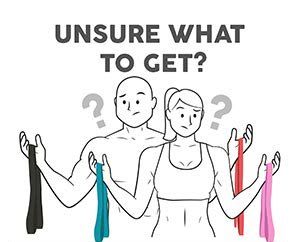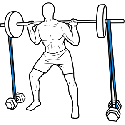Yoga and Pilates are timeless practices that focus on strength, flexibility, and mindfulness. But what if you could take your practice to the next level? Enter RubberBanditz resistance bands—a versatile, portable, and effective tool to enhance your yoga and Pilates routines. Whether you're a beginner or a seasoned practitioner, resistance bands can add a new dimension to your workouts, helping you deepen stretches, improve balance, and build strength. In this blog, we’ll explore how you can incorporate our resistance bands into your yoga and Pilates practice for a more dynamic and rewarding experience.
Why Use Resistance Bands in Yoga and Pilates?
Resistance bands are a fantastic addition to yoga and Pilates because they:
-
Enhance Stretching: Bands allow you to extend your reach and deepen stretches safely.
-
Improve Alignment: They help you maintain proper form and posture during challenging poses.
-
Build Strength: Adding resistance increases the intensity of your movements, helping you build muscle.
-
Increase Versatility: Bands can be used in countless ways to modify or intensify exercises.
RubberBanditz resistance bands, known for their durability, comfort, and eco-friendly materials, are the perfect companion for your practice. Let’s dive into some creative ways to use them!
1. Deepen Your Yoga Stretches
Yoga is all about flexibility and mindfulness, and resistance bands can help you achieve deeper stretches without straining your muscles. Here’s how:
-
Seated Forward Fold (Paschimottanasana): Loop a RubberBanditz band around the balls of your feet and hold the ends. Gently pull yourself forward, using the band to extend your reach and deepen the stretch in your hamstrings and lower back.
-
Reclined Hand-to-Big-Toe Pose (Supta Padangusthasana): Lie on your back and loop the band around one foot. Extend your leg toward the ceiling, using the band to gently pull it closer for a deeper hamstring stretch.
-
Cow Face Pose (Gomukhasana): If you struggle to clasp your hands behind your back, use a resistance band to bridge the gap. Hold one end in each hand and gently pull to open your shoulders and chest.
2. Strengthen Your Pilates Moves
Pilates focuses on core strength, stability, and controlled movements. Resistance bands can add an extra challenge to your Pilates routine, helping you build strength and endurance.
-
Resisted Leg Circles: Lie on your back and loop a RubberBanditz band around one foot. Extend your leg toward the ceiling and perform slow, controlled circles. The band adds resistance, engaging your core and hip muscles even more.
-
Standing Side Leg Lifts: Place the band around your ankles and stand on one leg. Lift the other leg to the side, fighting the resistance of the band to target your outer thighs and glutes.
-
Resisted Roll-Ups: Sit on the floor with your legs extended and loop the band around your feet. Hold the ends of the band and perform a roll-up, using the resistance to engage your core and improve control.
3. Improve Balance and Stability
Balance is a key component of both yoga and Pilates. Resistance bands can help you refine your balance and stability by adding an element of instability to your practice.
-
Tree Pose (Vrksasana): Stand on one leg and loop the band around the other foot. Hold the ends of the band and extend your leg to the side, using the band to challenge your balance and engage your core.
-
Single-Leg Deadlifts: Place the band under one foot and hold the ends in your hands. Hinge forward at the hips, lifting your back leg and using the band to add resistance. This move improves balance while strengthening your hamstrings and glutes.
4. Modify Poses for All Levels
One of the best things about resistance bands is their ability to make poses accessible to everyone, regardless of fitness level.
-
Bridge Pose (Setu Bandhasana): Place the band around your thighs, just above your knees. As you lift your hips into a bridge, press your knees outward against the band to engage your glutes and outer thighs.
-
Plank with Leg Lifts: Loop the band around your ankles and get into a plank position. Lift one leg at a time, using the band to add resistance and target your glutes and core.
5. Enhance Recovery and Relaxation
Resistance bands aren’t just for intense workouts—they’re also great for recovery and relaxation. Use them to gently stretch tight muscles after your practice.
-
Supine Twist Stretch: Lie on your back and loop the band around one foot. Extend your leg across your body, using the band to guide it into a gentle twist. This stretch is perfect for releasing tension in your lower back and hips.
-
Shoulder Opener: Hold the band with both hands and extend your arms overhead. Slowly move your hands apart, using the band to stretch your shoulders and chest.
Why Choose RubberBanditz Resistance Bands?
When it comes to resistance bands, quality matters. RubberBanditz bands are made from 100% natural latex, making them eco-friendly and free from harmful chemicals. They’re also incredibly durable, with a non-slip design that ensures safety during your practice. Plus, they come in a variety of resistance levels, so you can choose the perfect band for your needs.
RubberBanditz
Incorporating resistance bands into your yoga and Pilates practice is a game-changer. Whether you’re looking to deepen your stretches, build strength, or improve balance, RubberBanditz resistance bands offer endless possibilities. So, grab your band, roll out your mat, and get ready to elevate your practice to new heights!
Ready to transform your yoga and Pilates routine? Explore the full range of RubberBanditz resistance bands today and discover the difference for yourself. Your body will thank you!




0 Comments
Leave a Comment